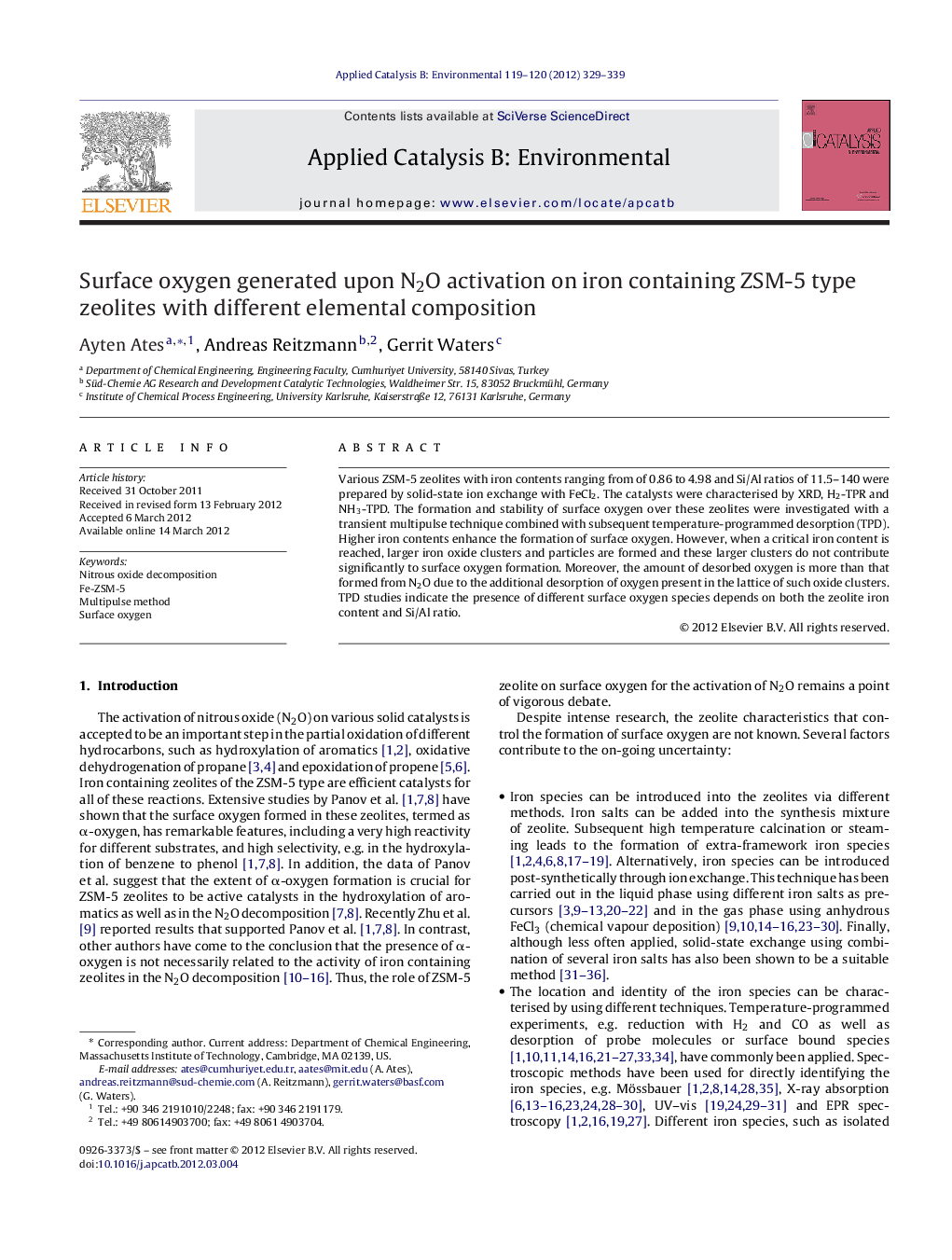| کد مقاله | کد نشریه | سال انتشار | مقاله انگلیسی | نسخه تمام متن |
|---|---|---|---|---|
| 46668 | 46444 | 2012 | 11 صفحه PDF | دانلود رایگان |

Various ZSM-5 zeolites with iron contents ranging from of 0.86 to 4.98 and Si/Al ratios of 11.5–140 were prepared by solid-state ion exchange with FeCl2. The catalysts were characterised by XRD, H2-TPR and NH3-TPD. The formation and stability of surface oxygen over these zeolites were investigated with a transient multipulse technique combined with subsequent temperature-programmed desorption (TPD). Higher iron contents enhance the formation of surface oxygen. However, when a critical iron content is reached, larger iron oxide clusters and particles are formed and these larger clusters do not contribute significantly to surface oxygen formation. Moreover, the amount of desorbed oxygen is more than that formed from N2O due to the additional desorption of oxygen present in the lattice of such oxide clusters. TPD studies indicate the presence of different surface oxygen species depends on both the zeolite iron content and Si/Al ratio.
Figure optionsDownload as PowerPoint slideHighlights
► The formation of surface oxygen depends on the certain types of iron species.
► Multinuclear iron species contributes to the surface oxygen formation.
► Bulky oxide species has only a minor impact on surface oxygen formation.
► Zeolites containing bulky iron oxide clusters also release additional oxygen.
► The Si/Al ratio of parent zeolite indirectly affects the surface oxygen formation.
Journal: Applied Catalysis B: Environmental - Volumes 119–120, 30 May 2012, Pages 329–339